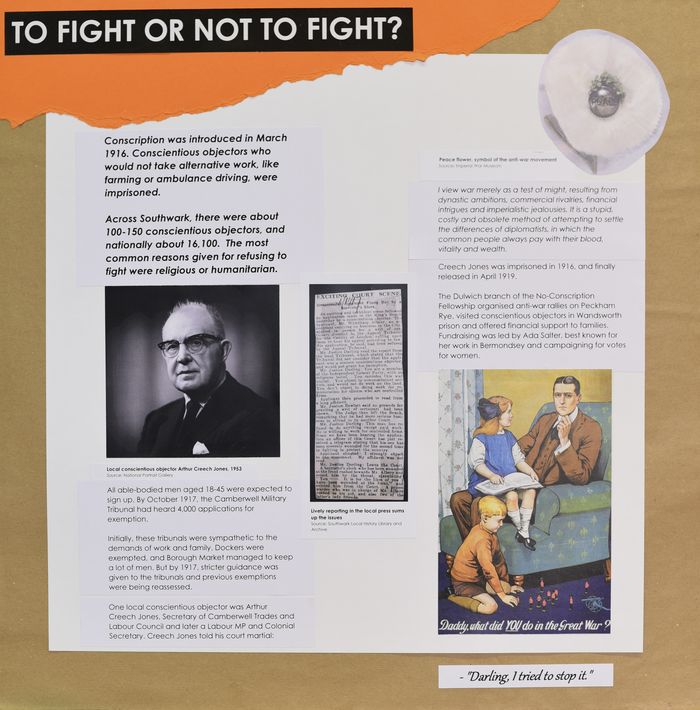Conscription was introduced in March 1916. Conscientious objectors who would not take alternative work, like farming or ambulance driving, were imprisoned. Across Southwark, there were about 100-150 conscientious objectors, and nationally about 16,100. The most common reasons given for refusing to fight were religious or humanitarian.

All able-bodied men aged 18-45 were expected to sign up. By October 1917, the Camberwell Military Tribunal had heard 4,000 applications for exemption.
Initially, these tribunals were sympathetic to the demands of work and family. Dockers were exempted, and Borough Market managed to keep a lot of men. But by 1917, stricter guidance was given to the tribunals and previous exemptions were being reassessed.
One local conscientious objector was Arthur Creech Jones, Secretary of Camberwell Trades and Labour Council and later a Labour MP and Colonial Secretary. Creech Jones told his court martial:
I view war merely as a test of might, resulting from dynastic ambitions, commercial rivalries, financial intrigues and imperialistic jealousies. It is a stupid, costly and obsolete method of attempting to settle the differences of diplomatists, in which the common people always pay with their blood, vitality and wealth.
Creech Jones was imprisoned in 1916, and finally released in April 1919.
The Dulwich branch of the No-Conscription Fellowship organised anti-war rallies on Peckham Rye, visited conscientious objectors in Wandsworth prison and offered financial support to families. Fundraising was led by Ada Salter, best known for her work in Bermondsey and campaigning for votes for women.
Read more about South London War Resisters here.
